The Amistad Memorial
Introduction
Text-to-speech Audio
Images
The Amistad captives revolting on the Spanish slave ship
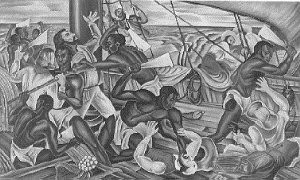
The Amistad Schooner
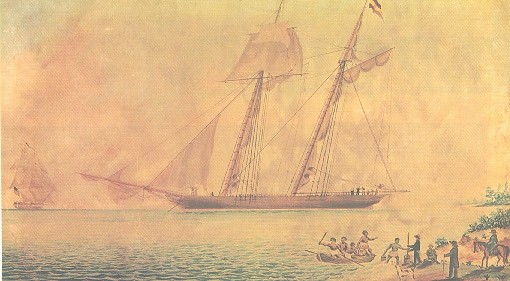
The Amistad Case in court
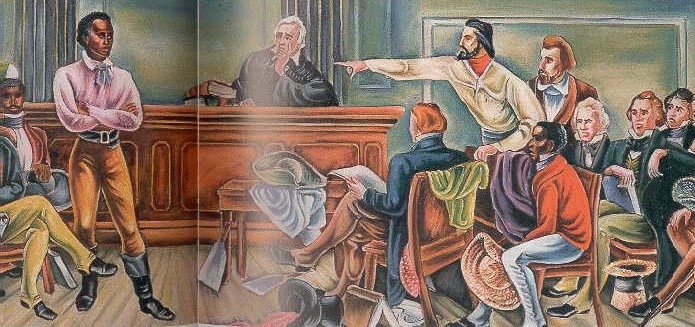
Joseph Cinque (Sengbe Pieh), leader of the revolt
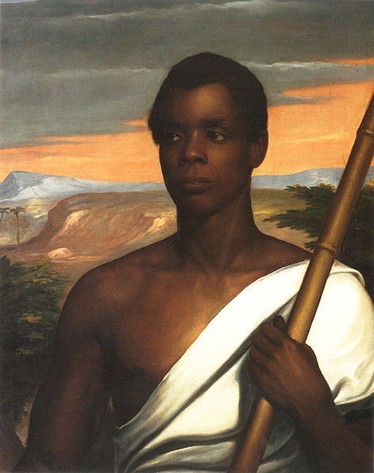
This monumnet was dedicated in 1992. This three-sided relief sculpture tells the story of Cinque’s journey from freedom in Sierra Leone, to his capture and trial in the Americas, to his return to freedom in Africa.
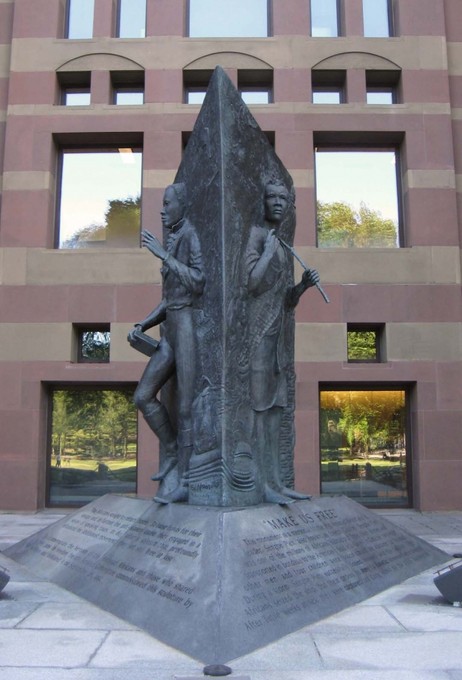
Backstory and Context
Text-to-speech Audio
The Mutiny Aboard the Amistad
The story of the Amistad incident begins in February 1839, when 53 West Africans (part of the Mende people near modern-day Sierra Leone) were kidnapped by the Spanish slave trade and sent aboard a slave ship to Havana, Cuba. At the time, the UK, USA, Spain, and the Netherlands had banned all international slave trade. Nonetheless, the Africans were sold as Cuban Natives to two Spanish men, Pedro Montez and Jose Ruiz. The Spanish sailors placed the 53 men, women, and children aboard the Amistad schooner, and they planned to take their captives to another part of Cuba.
During the trip, however, the Amistad’s cook drew his hand past his throat and indicated in cruel jest to one of the captives, named Joseph Cinqué (real name Sengbe Pieh), that they would be killed and eaten upon arrival. Stunned, Cinqué used a nail he found to pick the locks of the other captives. On the third evening, using machete-like blades they found as weapons, the captives revolted against the Spanish ship, killing the captain, the cook, and two sailors. Montez and Ruiz were spared, as Cinqué suggested that the Spaniards were the only ones capable of navigating them to Africa.
The Spaniards sailed east during the day but tried returning the ship to Cuba at night (Cinqué was only sure of the boat’s direction by day). This zig-zagging route took the ship off the coast of the Long Island Sound. A U.S. Coast Guard ship, the Washington, intercepted the schooner, freed the two Spaniards, and arrested the mutineers. The Amistad was then towed to New London, Connecticut; it’s arrival dominate the news for weeks afterward. Officers of the Washington claimed salvage rights over the goods of the Amistad, including the supposed slaves, and the Spanish men charged the Africans with murder and piracy.
The Amistad Case of 1839
The Africans were referred to Circuit Court for trial and were put into custody at the county jail in New Haven. While they were there, they became a huge attraction with many as 5,000 visitors a day (the jailer charged a New York shilling for close looks at the captives). The New Haven county was quite loose as well, and the jailers would take the children on wagon rides and the adults were allowed daily exercise on the New Haven Green. A group of abolitions saw a profound cause in the captives, and the Amistad Committee was soon formed to enlist legal help.
At the same time, Spain pressed the U.S. for the return of the Amistad to its Cuban owners and the captives to be sent to Havana for trial by Spanish courts. The U.S. decided to keep the captives for trial, as it was unclear whether the Africans were “property.” In civil court, the adventures of the Africans were finally brought to light.
Under secret orders of President Martin Van Burren, a ship was sent to New Haven harbor, ready to quickly take the Africans back to Cuba to avoid appeal if the courts should rule in favor of the government. On January 13th, 1840, Judge Andrew T. Johnson ruled that the captives were born free and kidnapped in violation of international law. As such, the Africans were ordered to be sent to President Van Buren, who would arrange their travel back to their homeland and not to Cuba.
The Van Buren Administration appealed, Judge Johnson affirmed the decision, and the Administration appealed again to the Supreme Court. Former President John Quincy Adams, then 74 years old, believed firmly in the rightness of the cause and joined in arguments before the predominately southern Supreme Court. On February 22, 1841, the arguments began. In March of that year, speaker of the Court Justice Story read the decision: the captives were “kidnapped Africans, who by the laws of Spain itself were entitled to freedom.” The Africans were free, and they could choose whether they wanted to stay or return to their homeland (keep in mind that this was not a decision regarding the legality of slavery, for if the captives had been kidnapped from Africa before Spain’s 1820 treaty banning the importation of slaves, they would be considered property of the Spanish men).
In November, 35 of the surviving Africans (several had died since their initial abduction) boarded a ship for return back to West Africa; only one of the captives, Sarah, would ever return to America.1
